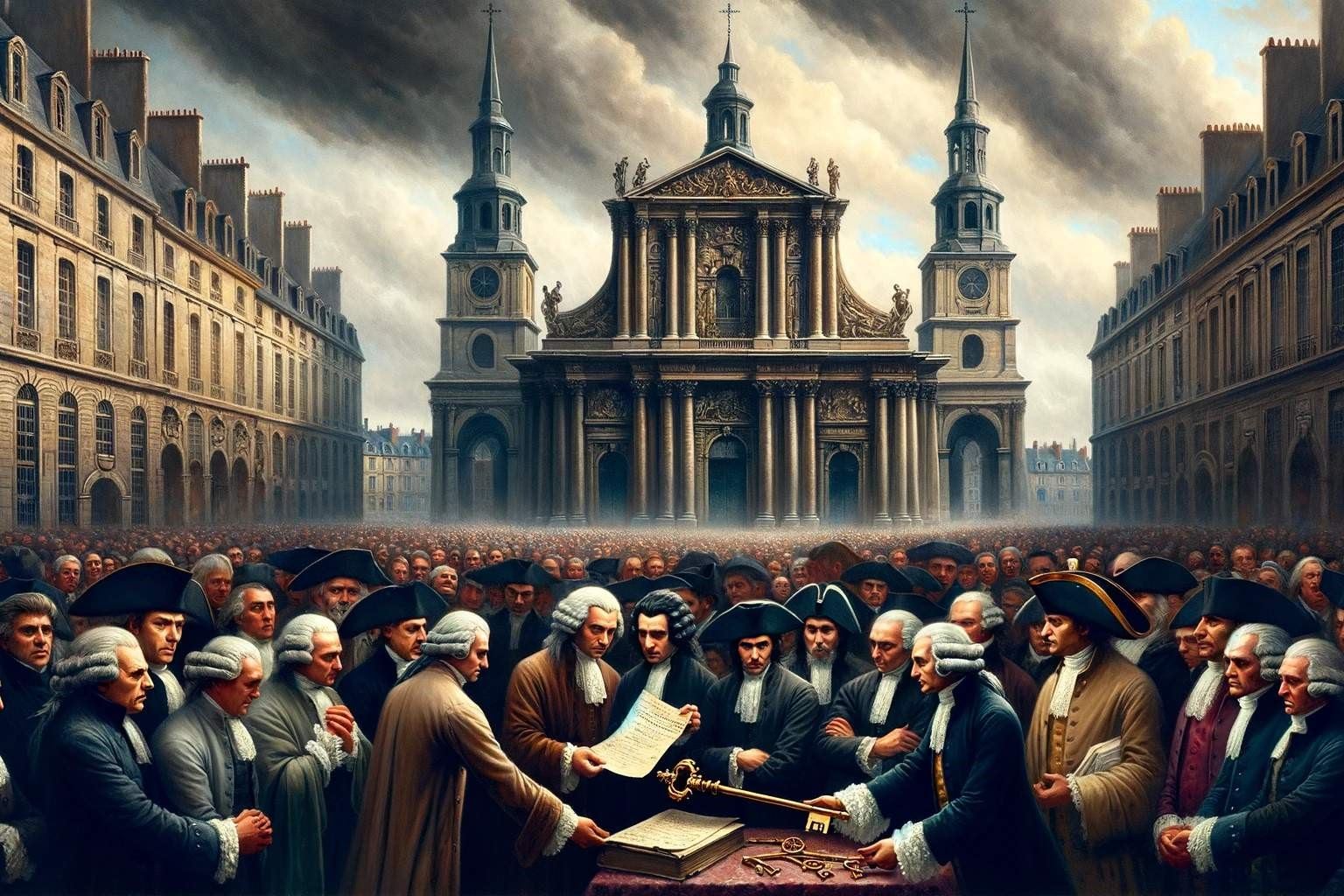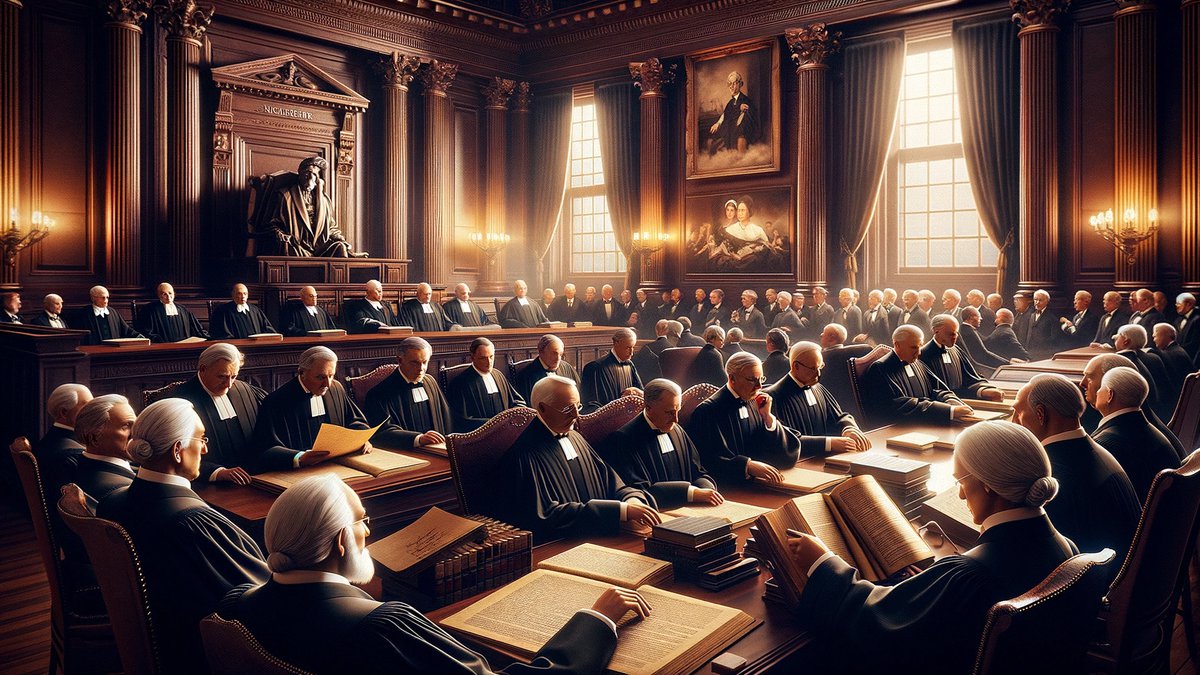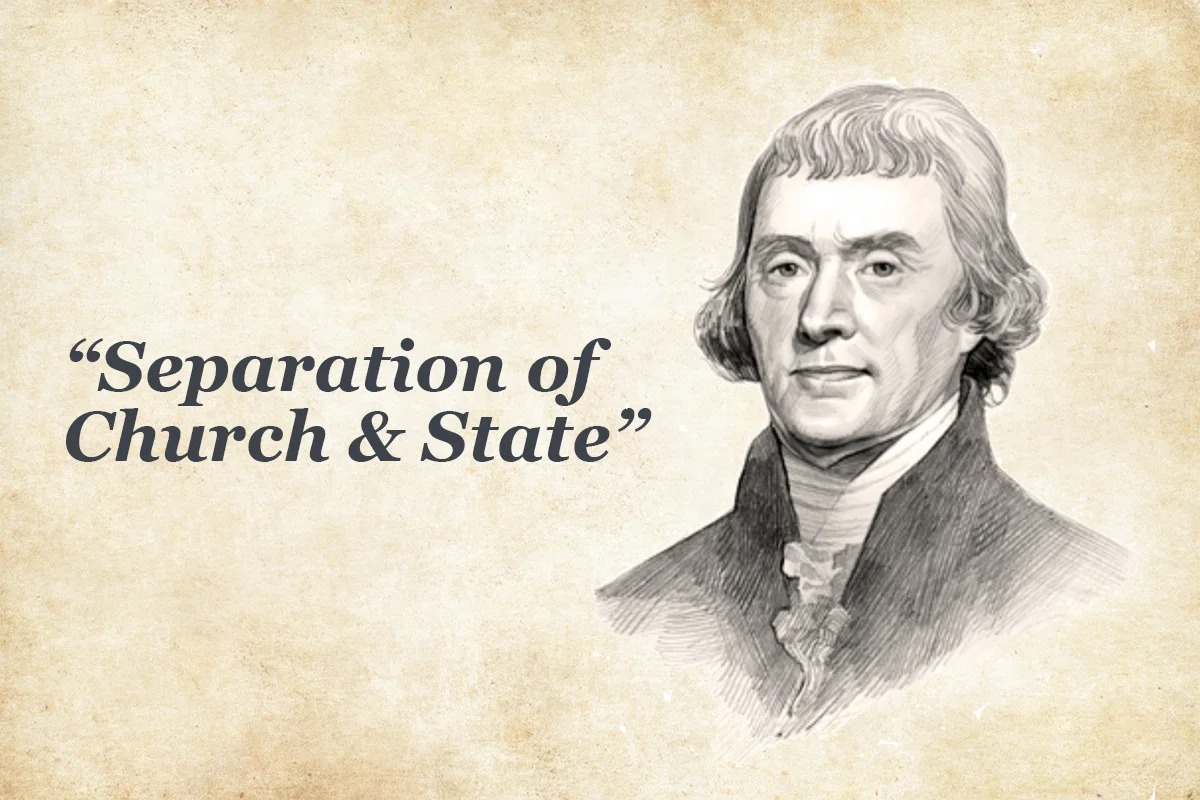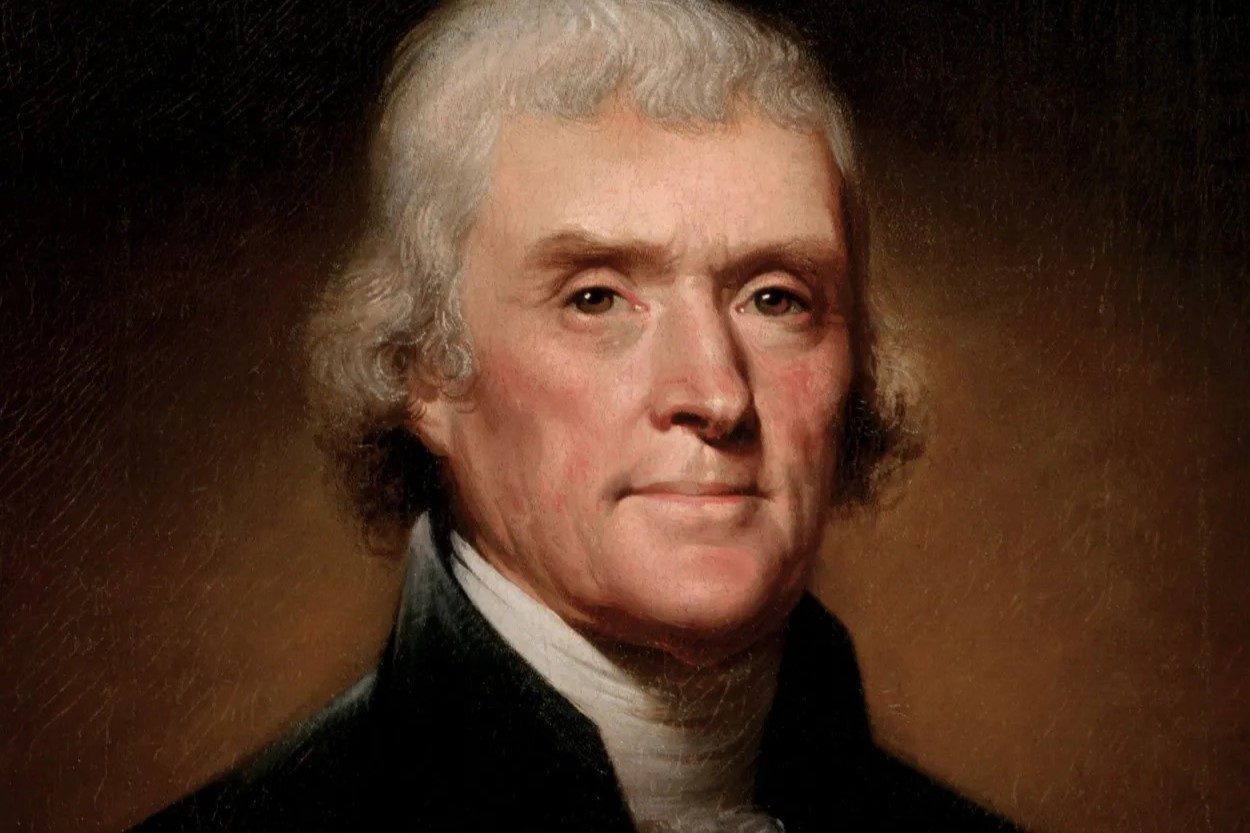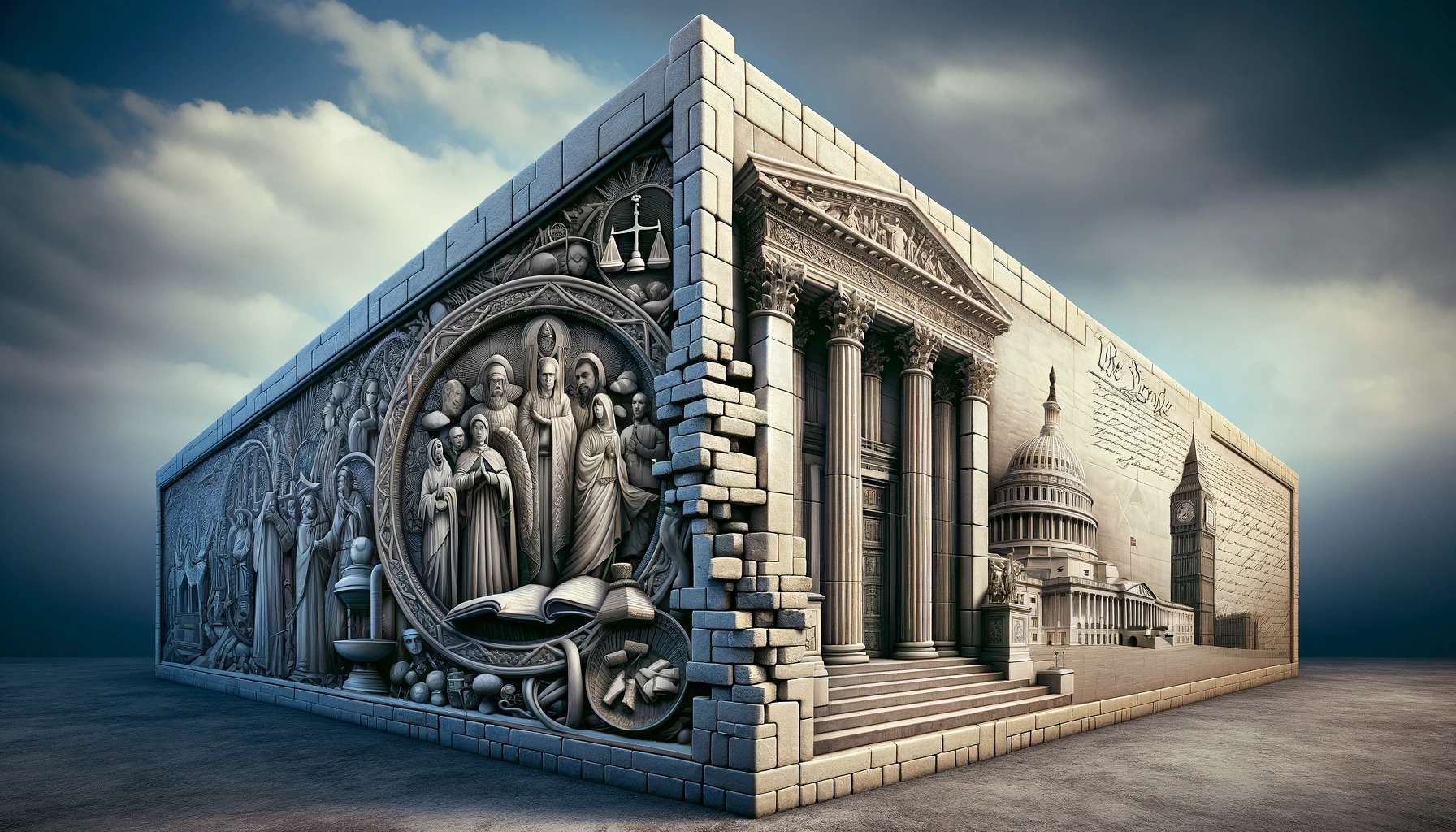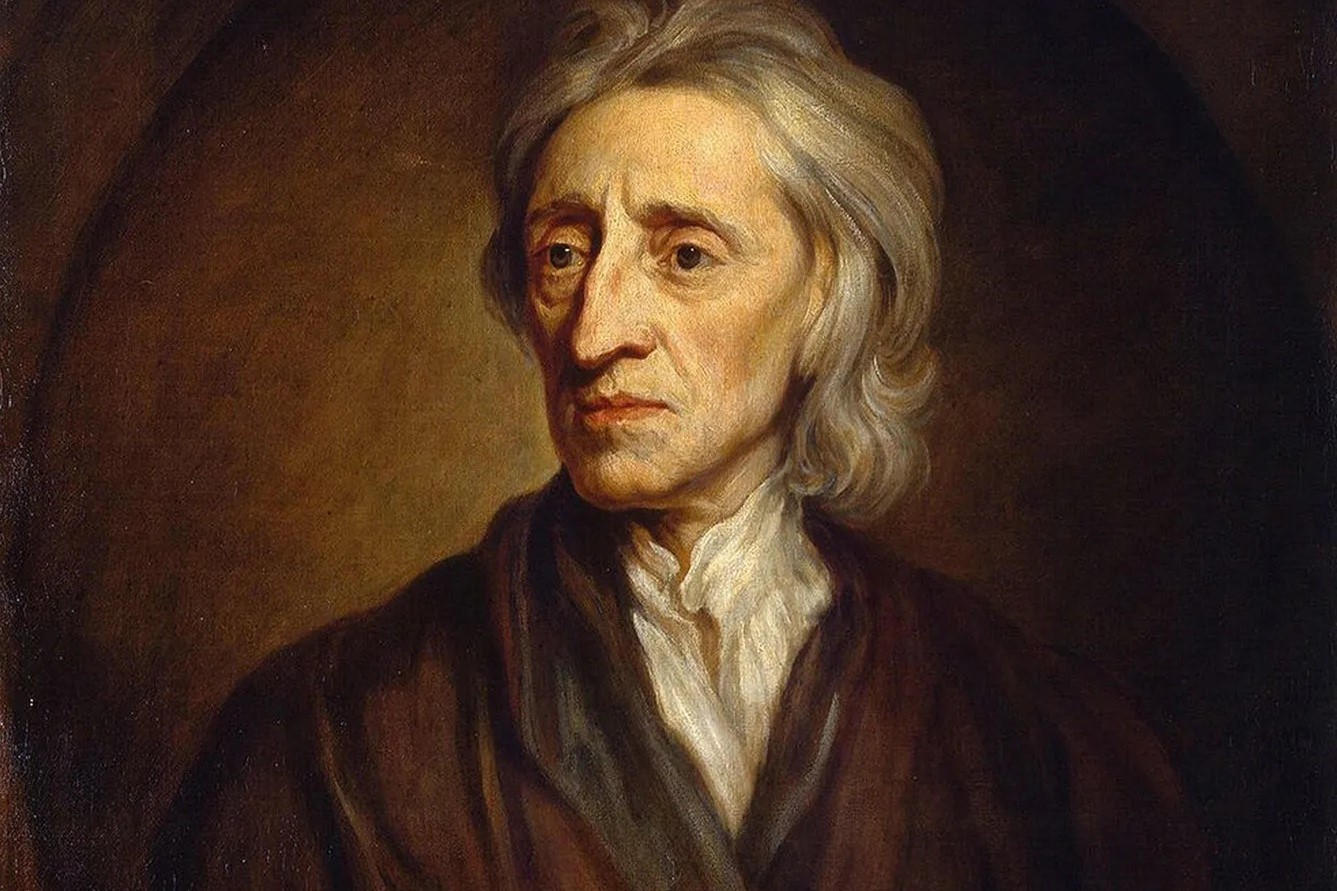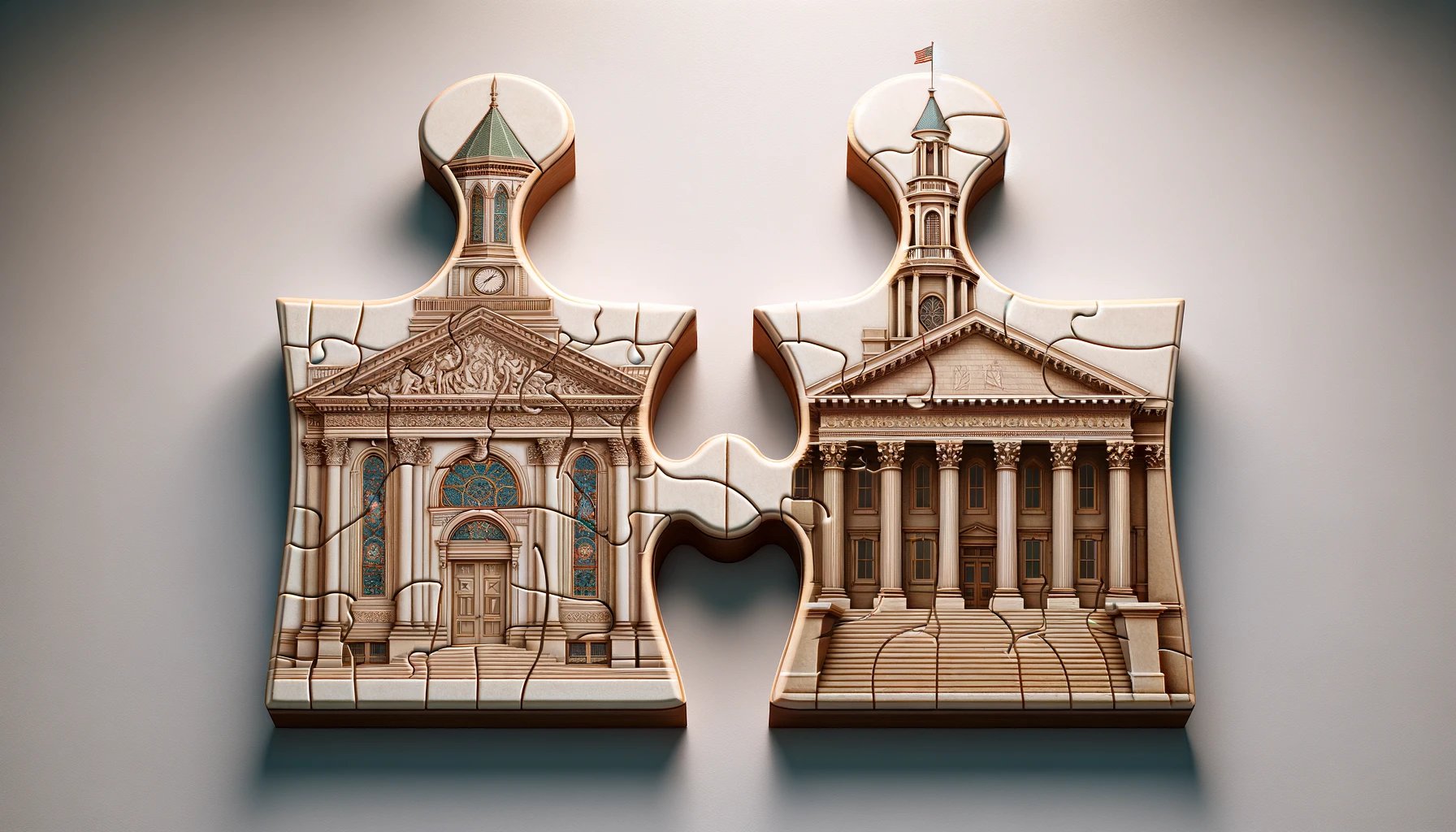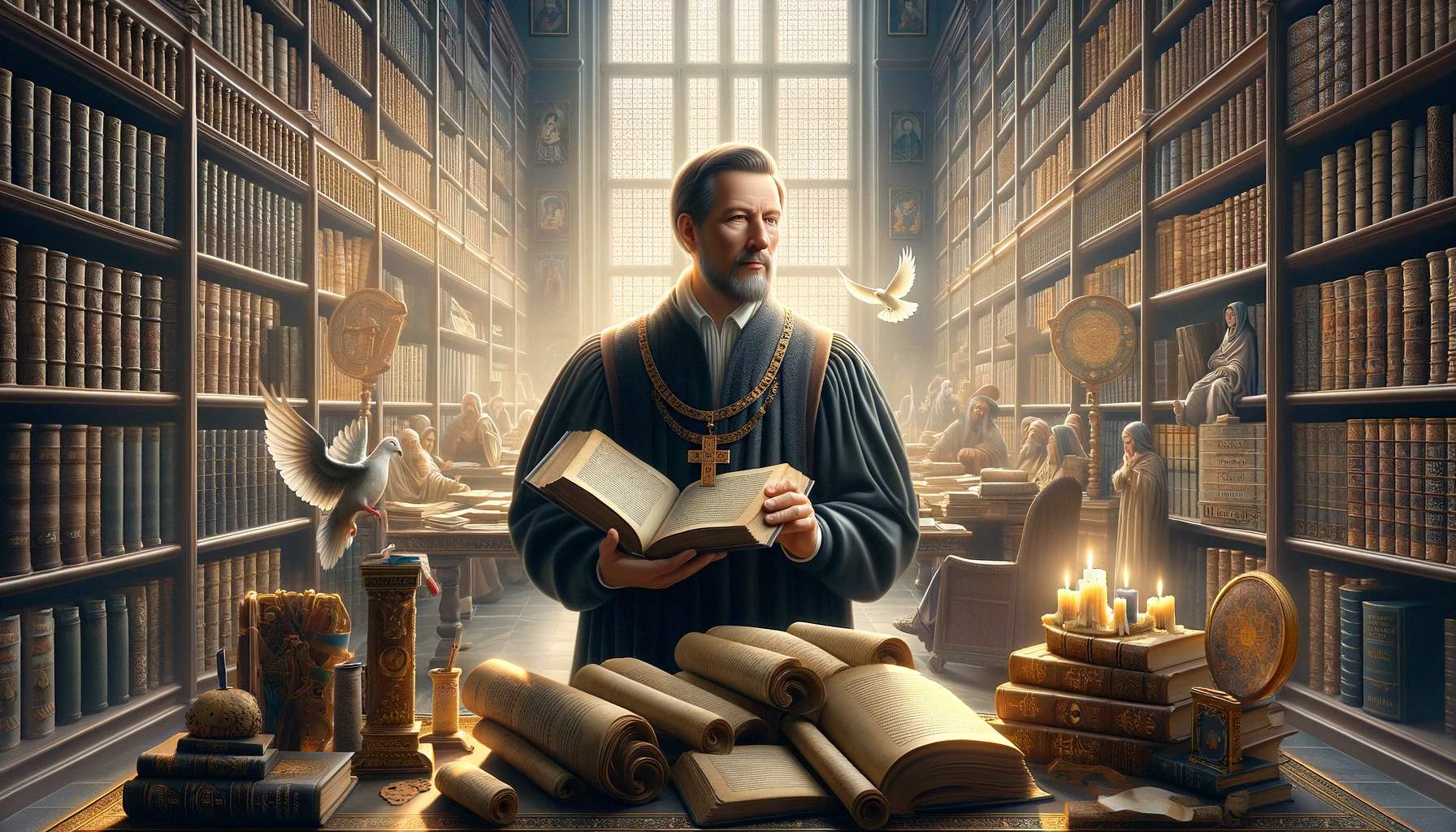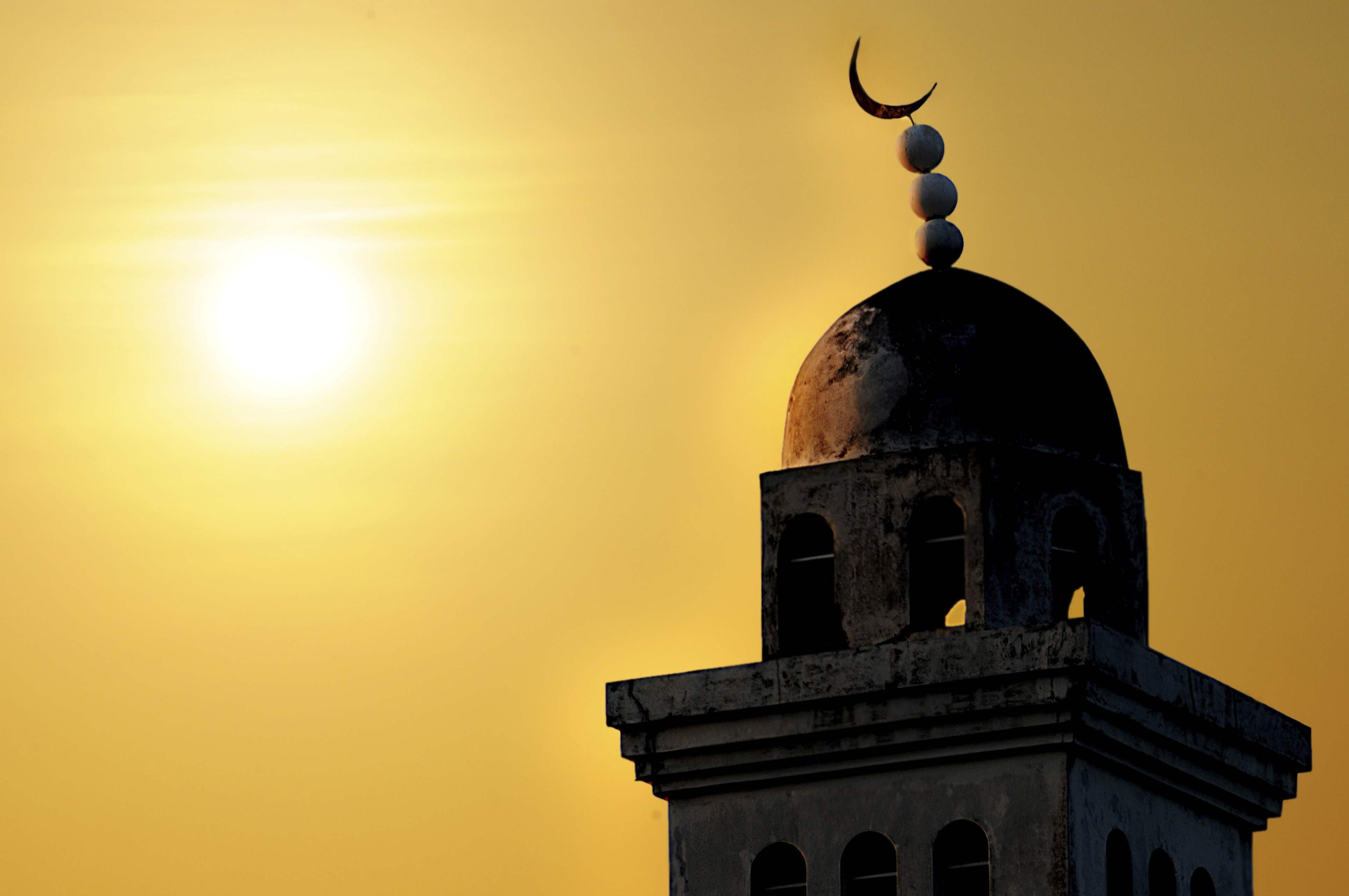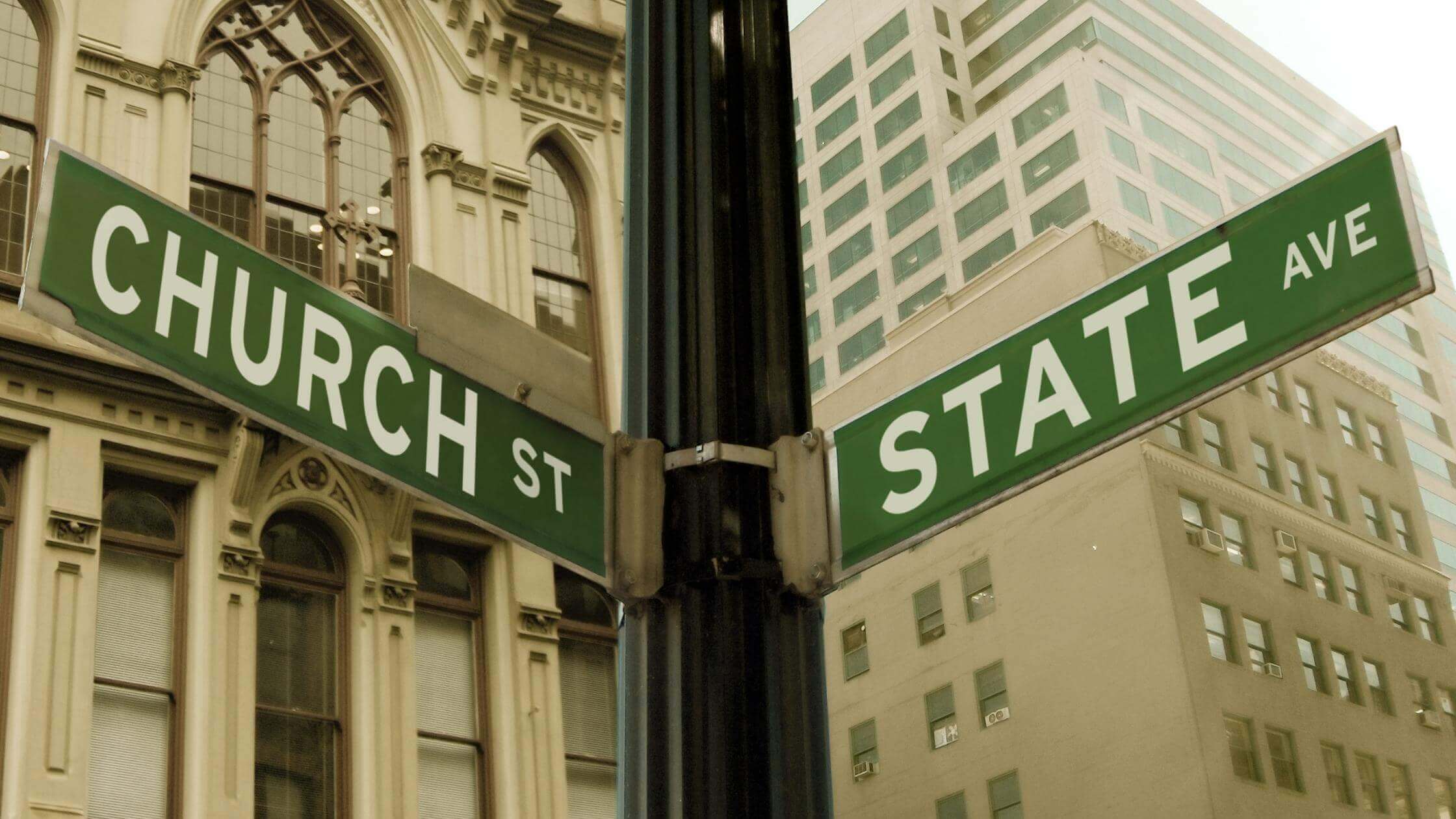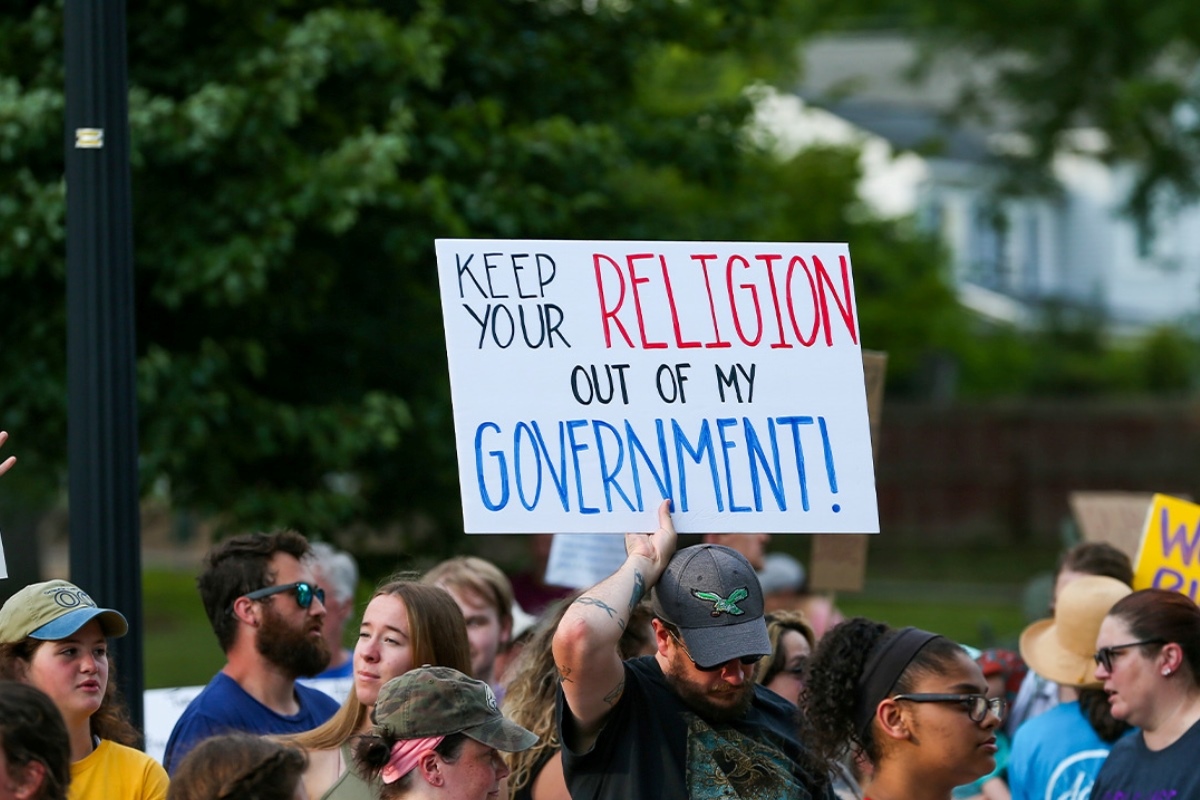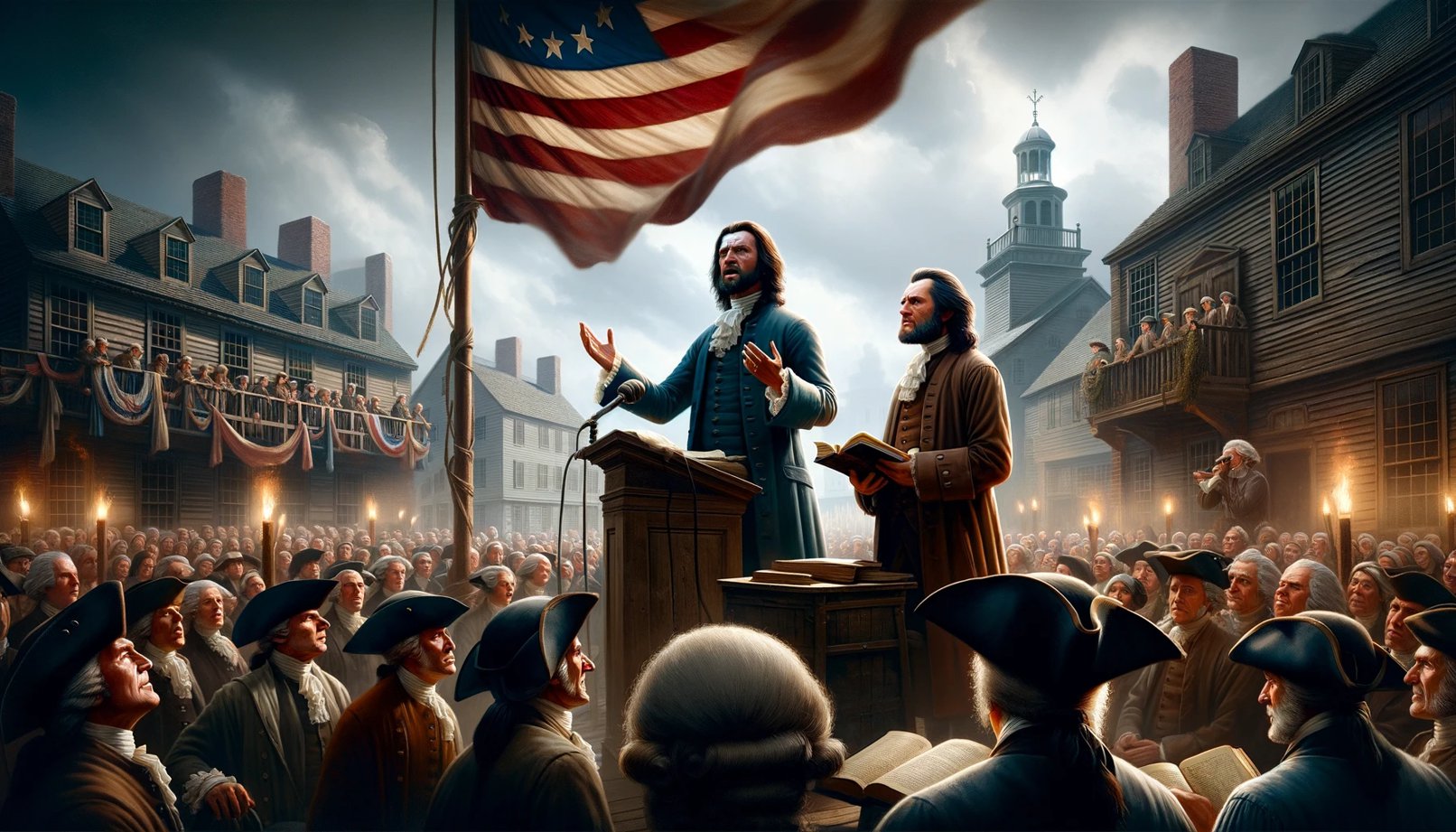Home>Theology and Spirituality>Where Did The Separation Of Church And State Come From
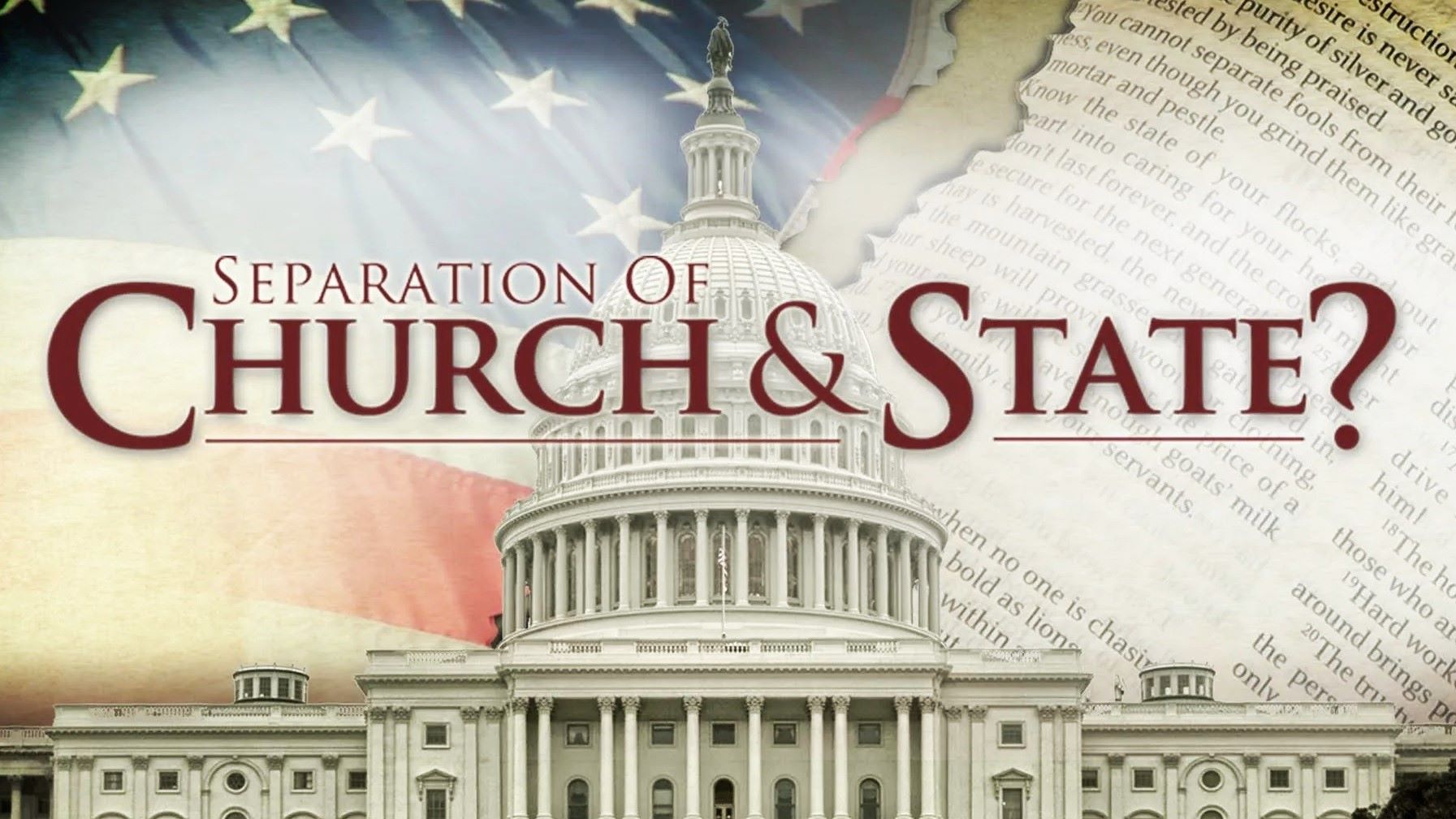

Theology and Spirituality
Where Did The Separation Of Church And State Come From
Published: February 11, 2024
Jason DeRose, Managing Editor at Christian.net, uses his expertise in religion and journalism to deepen understanding of faith's societal impacts. His editorial leadership, coupled with a strong academic background, enriches the platform’s diverse content, earning him recognition in both journalism and religious circles.
Discover the origins of the separation of church and state and its impact on theology and spirituality. Explore the historical context and significance of this fundamental principle.
(Many of the links in this article redirect to a specific reviewed product. Your purchase of these products through affiliate links helps to generate commission for Christian.net, at no extra cost. Learn more)
Table of Contents
Introduction
The concept of the separation of church and state has been a fundamental principle in the governance of many modern societies. It represents the idea that the institutions of religion and government should operate independently of each other, with neither exerting undue influence over the other. This principle has deep historical roots and has evolved over time to become a cornerstone of modern democratic societies.
The separation of church and state is not only a legal and political concept but also a deeply philosophical and theological one. It touches on questions of individual freedom, religious liberty, and the role of government in regulating religious practices. Understanding the origins and evolution of this principle is crucial for comprehending its significance in contemporary society.
In this article, we will delve into the historical, philosophical, and legal underpinnings of the separation of church and state. We will explore its origins, the influence of Enlightenment thinkers, the American experience, the establishment clause, and the evolution of this principle over time. Additionally, we will examine the current debates and challenges surrounding the separation of church and state, shedding light on its relevance in the modern world.
By examining the historical context and philosophical foundations of the separation of church and state, we can gain a deeper appreciation for its impact on society and its role in shaping the relationship between religion and government. Let's embark on a journey to unravel the intricate tapestry of this fundamental principle and its enduring significance in the fabric of modern governance.
The Origins of the Separation of Church and State
The origins of the separation of church and state can be traced back to ancient civilizations, where the intertwining of religious and political authority was commonplace. In many early societies, rulers were often regarded as divine or were closely associated with religious institutions, leading to a fusion of religious and political power. However, as societies evolved, so too did the concept of separating the domains of religion and governance.
One of the earliest articulations of the separation of church and state can be found in ancient Greece. The city-state of Athens, often considered the cradle of democracy, implemented a system where religious authority was distinct from political authority. This demarcation allowed for the development of democratic governance independent of religious influence, laying the groundwork for the eventual conceptualization of the separation of church and state.
Similarly, in ancient Rome, the distinction between religious and political authority began to take shape. The Roman Empire's adoption of Christianity as the state religion under Emperor Constantine the Great raised questions about the relationship between religious institutions and the imperial government. Over time, the idea of separating the religious and political spheres gained traction, influencing the development of legal and philosophical frameworks that would shape Western political thought for centuries to come.
The concept of the separation of church and state also has roots in various religious and philosophical traditions. In the teachings of Jesus Christ, the notion of rendering unto Caesar what is Caesar's and unto God what is God's reflects a delineation between the realms of earthly governance and spiritual devotion. This principle laid the groundwork for the idea that religious and secular authorities should operate independently, each with its own sphere of influence and responsibility.
Furthermore, the Islamic tradition, particularly during the time of the early caliphates, demonstrated a degree of separation between religious and political authority. While the caliphs held both temporal and religious leadership roles, there were instances where scholars and jurists operated independently of the ruling caliphs, contributing to a degree of autonomy in religious matters.
These early historical and philosophical antecedents set the stage for the eventual crystallization of the separation of church and state as a foundational principle in modern governance. The subsequent influence of Enlightenment thinkers and the experiences of nations like the United States further solidified this concept, shaping its evolution into a fundamental tenet of democratic societies.
The origins of the separation of church and state are deeply intertwined with the historical, philosophical, and religious developments of human civilization, reflecting a complex tapestry of ideas and experiences that continue to resonate in contemporary debates and discussions surrounding the relationship between religion and government.
The Influence of Enlightenment Thinkers
The Enlightenment era, spanning the 17th and 18th centuries, marked a pivotal period in the evolution of the separation of church and state. Enlightenment thinkers, also known as philosophes, championed reason, individualism, and the pursuit of knowledge, challenging traditional sources of authority and advocating for the autonomy of human reason. Their ideas profoundly influenced the development of modern political thought and played a significant role in shaping the concept of the separation of church and state.
One of the central figures of the Enlightenment, John Locke, articulated a compelling case for the separation of church and state in his influential writings. In his "Letter Concerning Toleration" and "Two Treatises of Government," Locke argued that religious belief should be a matter of individual conscience and that the state should not compel or coerce its citizens in matters of faith. He advocated for religious toleration and the separation of religious and political authority, laying the groundwork for the protection of religious freedom within a secular state.
Similarly, the French philosopher Voltaire, a staunch advocate of freedom of thought and expression, vehemently criticized the close alliance between the Catholic Church and the French monarchy. His writings, including the famous "Treatise on Tolerance," emphasized the need to separate religious institutions from the machinery of the state, promoting the idea of a secular government that respected the diversity of religious beliefs and upheld the rights of individuals to worship according to their conscience.
Another luminary of the Enlightenment, Baron de Montesquieu, contributed to the discourse on the separation of powers, a concept integral to the division between church and state. In his seminal work "The Spirit of the Laws," Montesquieu proposed the idea of a tripartite government with separate branches—executive, legislative, and judicial—each serving as a check on the powers of the others. This framework, which later influenced the structure of modern democratic governments, underscored the importance of preventing any single institution, including religious bodies, from monopolizing authority.
The ideas of these Enlightenment thinkers, among others, reverberated across Europe and beyond, inspiring movements for religious liberty, individual rights, and the limitation of state power. Their advocacy for the separation of church and state laid the groundwork for the legal and philosophical frameworks that would later inform the governance of modern democratic societies, profoundly shaping the relationship between religion and government.
The influence of Enlightenment thinkers on the concept of the separation of church and state underscores the enduring legacy of their ideas and their profound impact on the development of modern political and legal systems. Their advocacy for religious tolerance, individual freedom, and the autonomy of reason continues to resonate in contemporary debates about the role of religion in public life and the protection of fundamental rights within diverse and pluralistic societies.
The American Experience
The American experience with the separation of church and state is deeply rooted in the nation's history and has had a profound impact on the development of constitutional principles and the protection of religious freedom. The Founding Fathers of the United States, drawing from Enlightenment ideals and their own experiences with religious persecution, sought to establish a government that safeguarded individual liberties while preventing the establishment of a state religion.
One of the pivotal moments in the American experience with the separation of church and state is encapsulated in the First Amendment to the United States Constitution. Ratified in 1791 as part of the Bill of Rights, the First Amendment includes the Establishment Clause, which prohibits the government from establishing an official religion or favoring one religious denomination over others. This foundational principle reflects the Founding Fathers' commitment to creating a secular government that respects the diversity of religious beliefs and ensures that no single faith holds sway over the affairs of the state.
The American experience also encompasses landmark legal cases that have shaped the interpretation and application of the separation of church and state. In the early 20th century, the Supreme Court's ruling in Everson v. Board of Education established a precedent for interpreting the Establishment Clause, affirming the principle of separation and setting the stage for subsequent decisions that delineated the boundaries between religion and government in public institutions.
Furthermore, the American experience with the separation of church and state extends to the ongoing dialogue and debate surrounding the role of religion in public life. Issues such as prayer in schools, the display of religious symbols on public property, and government funding for religious organizations have sparked contentious legal and societal discussions, underscoring the complexities inherent in balancing religious freedom with the imperative of maintaining a secular government.
The American experience with the separation of church and state continues to evolve, reflecting the dynamic interplay between legal precedents, societal norms, and the diverse tapestry of religious beliefs in the United States. This ongoing evolution underscores the enduring significance of the separation of church and state as a cornerstone of American democracy, shaping the contours of religious liberty and the relationship between religion and governance in the modern era.
The American experience with the separation of church and state stands as a testament to the enduring legacy of the Founding Fathers' vision and the ongoing pursuit of a society that upholds the principles of religious freedom, individual autonomy, and the secular governance enshrined in the nation's constitutional framework.
The Establishment Clause
The Establishment Clause, a pivotal component of the First Amendment to the United States Constitution, stands as a bulwark against the establishment of a state religion and ensures the protection of religious freedom within the framework of American governance. Enshrined in the Bill of Rights and ratified in 1791, the Establishment Clause embodies the Founding Fathers' commitment to creating a secular government that respects the diversity of religious beliefs and prevents the imposition of any single faith upon the citizenry.
The Establishment Clause states that "Congress shall make no law respecting an establishment of religion, or prohibiting the free exercise thereof." This succinct yet profound declaration has been the subject of extensive legal interpretation and has played a central role in shaping the relationship between religion and government in the United States. It serves as a cornerstone of the principle of separation of church and state, delineating the boundaries between religious institutions and the machinery of the state.
Throughout American history, the Establishment Clause has been invoked in landmark legal cases that have shaped the interpretation and application of its principles. From Everson v. Board of Education to Lemon v. Kurtzman, the Supreme Court has grappled with defining the parameters of government involvement in religious matters while upholding the constitutional mandate of religious neutrality. These decisions have established precedents for evaluating the constitutionality of government actions related to religion, including public funding for religious institutions, the display of religious symbols on public property, and the inclusion of religious practices in public settings.
The Establishment Clause has also been instrumental in fostering a pluralistic society where individuals are free to practice their faith without fear of state-sponsored coercion or discrimination. It has served as a safeguard against the entanglement of religious and political authority, ensuring that the government remains neutral in matters of faith and refrains from endorsing or promoting specific religious beliefs.
The ongoing dialogue and debate surrounding the Establishment Clause reflect the dynamic interplay between legal precedents, societal norms, and the evolving landscape of religious diversity in the United States. As the nation continues to navigate complex issues related to the intersection of religion and governance, the Establishment Clause remains a lodestar guiding the delicate balance between religious freedom and the imperative of maintaining a secular government.
In essence, the Establishment Clause stands as a testament to the enduring commitment of the United States to uphold the principles of religious freedom, individual autonomy, and the secular governance enshrined in the nation's constitutional framework. Its influence reverberates in the ongoing quest to reconcile the rich tapestry of religious beliefs with the principles of democratic governance, shaping the contours of religious liberty in the modern era.
The Evolution of the Separation of Church and State
The evolution of the separation of church and state spans centuries, reflecting a dynamic interplay of historical, philosophical, and legal developments that have shaped the relationship between religion and governance. From its early roots in ancient civilizations to its crystallization as a foundational principle of modern democratic societies, the concept of separating religious and political authority has undergone a profound transformation, leaving an indelible imprint on the fabric of human governance.
The evolution of the separation of church and state is intricately linked to the rise of democratic ideals and the recognition of individual rights. As societies transitioned from autocratic rule to systems that valued the participation and autonomy of citizens, the need to delineate the spheres of religious and political influence became increasingly apparent. This shift was propelled by philosophical movements such as the Enlightenment, which emphasized reason, tolerance, and the autonomy of human agency. Enlightenment thinkers, including John Locke, Voltaire, and Baron de Montesquieu, laid the groundwork for the conceptualization of a secular government that respected religious pluralism and safeguarded individual liberties.
The American experience played a pivotal role in the evolution of the separation of church and state, as the Founding Fathers enshrined the principle in the First Amendment to the United States Constitution. This constitutional mandate, coupled with landmark legal decisions, has shaped the interpretation and application of the separation of church and state in the American context, setting precedents for religious freedom and the neutrality of the government in matters of faith.
Furthermore, the evolution of the separation of church and state has been marked by ongoing debates and challenges, reflecting the complexities inherent in balancing religious freedom with the imperative of maintaining a secular government. Issues such as prayer in schools, the display of religious symbols on public property, and government funding for religious organizations have underscored the need for a nuanced approach to navigating the intersection of religion and governance in contemporary society.
As the world continues to grapple with the complexities of religious diversity and the role of government in regulating religious practices, the evolution of the separation of church and state remains a dynamic and evolving phenomenon. It stands as a testament to the enduring quest for a society that upholds the principles of religious freedom, individual autonomy, and the secular governance enshrined in the constitutional frameworks of democratic nations.
Current Debates and Challenges
The concept of the separation of church and state continues to be the subject of vigorous debates and complex challenges in contemporary society. As the landscape of religious diversity evolves and societal norms shift, new questions and dilemmas emerge, shaping the ongoing discourse surrounding the relationship between religion and governance.
One of the prominent debates revolves around the intersection of religious beliefs and public policy. Issues such as LGBTQ+ rights, reproductive rights, and end-of-life care have sparked contentious discussions about the extent to which religious convictions should influence legislative decisions. Balancing the protection of individual liberties with the preservation of religious freedom presents a formidable challenge, as policymakers seek to navigate the diverse array of beliefs within a pluralistic society.
Furthermore, the role of religion in public education remains a contentious topic. Debates over the inclusion of religious teachings in school curricula, the display of religious symbols on school grounds, and the accommodation of diverse religious practices in educational settings underscore the complexities inherent in maintaining a secular and inclusive learning environment while respecting the rights of students to express their faith.
The ongoing dialogue surrounding the accommodation of religious practices in the public sphere also presents challenges. From the display of religious symbols on government property to the invocation of religious invocations in public ceremonies, the boundaries between religious expression and government endorsement continue to be a source of contention. Striking a balance between acknowledging the cultural and historical significance of religious traditions and upholding the principles of religious neutrality remains a delicate and nuanced endeavor.
Moreover, the intersection of religious freedom and anti-discrimination laws has given rise to complex legal and ethical dilemmas. Cases involving businesses refusing services based on religious beliefs, religious exemptions from certain laws, and the accommodation of religious practices in the workplace have sparked intense debates about the boundaries of religious liberty and the protection of individual rights.
As society grapples with these multifaceted debates and challenges, the need for a nuanced and inclusive approach to navigating the intersection of religion and governance becomes increasingly apparent. The ongoing evolution of the separation of church and state reflects the enduring quest for a society that upholds the principles of religious freedom, individual autonomy, and the secular governance enshrined in the constitutional frameworks of democratic nations.
Conclusion
The separation of church and state stands as a testament to the enduring quest for a society that upholds the principles of religious freedom, individual autonomy, and secular governance. From its ancient origins in the philosophical and religious traditions of diverse civilizations to its crystallization as a foundational principle of modern democratic societies, the concept has undergone a profound evolution, leaving an indelible imprint on the fabric of human governance.
The historical and philosophical antecedents of the separation of church and state, rooted in the teachings of ancient civilizations, the Enlightenment ideals of reason and tolerance, and the experiences of nations like the United States, have shaped its trajectory. The influence of Enlightenment thinkers, such as John Locke, Voltaire, and Baron de Montesquieu, has been instrumental in advocating for religious tolerance, individual freedom, and the autonomy of reason, laying the groundwork for the legal and philosophical frameworks that inform the governance of modern democratic societies.
The American experience, encapsulated in the First Amendment to the United States Constitution and landmark legal cases, has played a pivotal role in shaping the interpretation and application of the separation of church and state. This constitutional mandate reflects the Founding Fathers' commitment to creating a secular government that respects the diversity of religious beliefs and ensures that no single faith holds sway over the affairs of the state.
The ongoing debates and challenges surrounding the intersection of religion and governance underscore the complexities inherent in balancing religious freedom with the imperative of maintaining a secular government. Issues such as LGBTQ+ rights, reproductive rights, religious expression in public education, and the accommodation of religious practices in the public sphere continue to shape the discourse surrounding the relationship between religion and governance in contemporary society.
As the world grapples with the complexities of religious diversity and the role of government in regulating religious practices, the evolution of the separation of church and state remains a dynamic and evolving phenomenon. It serves as a guiding principle in the ongoing quest for a society that upholds the principles of religious freedom, individual autonomy, and secular governance, shaping the contours of religious liberty in the modern era.
